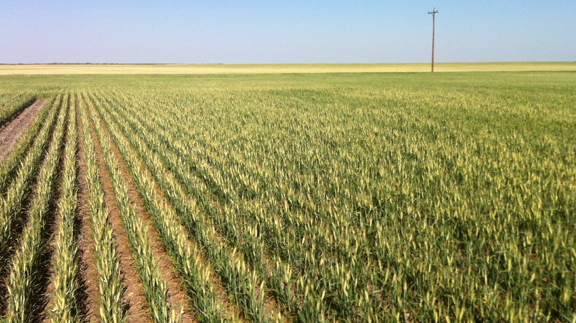Farm & Ranch
Red River Crops Conference set for Jan. 20-21 in Altus

Writer: Kay Ledbetter, 806-677-5608, [email protected]
Contacts: Stan Bevers, 940-552-9941, [email protected]
ALTUS, Oklahoma – Challenges, obstacles and profitability potential facing agriculture producers don’t recognize state boundaries, so Texas and Oklahoma officials along the Red River are once again offering regional farmers and ranchers a two-day agricultural conference.
“Planning for Success – Crop production information designed for Southwest Oklahoma and the Texas Rolling Plains” is the theme of the third annual Red River Crops Conference, set for Jan. 20-21 at the Southwest Technology Center, 711 W. Tamarack in Altus, Oklahoma.
“The conference goal is to provide agricultural producers with relevant management information for this production area that will create and enhance their profitability,” said Stan Bevers, Texas A&M AgriLife Extension Service agricultural economist in Vernon, Texas.
Bevers said AgriLife Extension and Oklahoma Cooperative Extension collaborated to conduct the first and very successful conference in January 2014. The conference alternates between Oklahoma and Texas and addresses special agricultural production circumstances in the upper Red River region in both states.
In the Red River region, obstacles can include water and land resources, and weather extremes such as hot and dry summers and bitterly cold winters, he said. Producers also find themselves managing pastures of both introduced and native grass for cattle operations, and crop mixes such as cotton, wheat, and grain and forage sorghum.
More recently, Bevers said, producers have discovered that canola, guar and sesame can also be successfully cultivated within this environment.
Both days will begin with registration at 8 a.m. and conclude at 4 p.m.
In-season and summer crops will be featured on Jan. 20. Discussion topics will include effective crop rotation and the use of cover crops, grain and forage sorghum production, transitioning from row crops systems to forage crop systems, best management practices for peanut production, a wheat breeding update and a market outlook.
Cotton will be featured on Jan. 21, with topics including cotton risk management issues, market outlook, variety discussions, herbicide options, seed treatments and disease management, and new innovative cotton production systems.
The fee of $25 covers both days. To register for the 2016 Red River Crops Conference, print the form from http://agrisk.tamu.edu/. Make checks payable to the Red River Crops Conference and mail to 2801 N. Main, Suite A, Altus, OK 73521.
Preregistration is encouraged for planning purposes. To preregister or for more information, contact a local Extension office in either Texas or Oklahoma, or call 580-482-0823.
-30-
Find more stories, photos, videos and audio at http://today.agrilife.org
Farm & Ranch
Managing Show Cattle Through The Winter

By Heather Welper
Husband and wife duo, Heather and Calvin Welper, are the Co-Owners and Operators or Two C Livestock, located in Valley View, Texas.
The pair’s operation has a show cattle focus where they raise and sell purebred heifers of all breeds and club calf Hereford steers.
When it comes to show cattle, the Welpers know a thing or two including how to prepare for the cold winter months and the Texas major show season run.
To read more, pick up a copy of the November edition of North Texas Farm & Ranch magazine, available digitally and in print. To subscribe by mail, call 940-872-5922.

Farm & Ranch
Double M Ranch & Rescue

By Hannah Claxton, Editor
As the sun rises each day, so do the dozens of mouths that Meghan McGovern is responsible for getting fed. Rather than the sounds of a rooster crowing, McGovern hears the bellows and bleats of a variety of exotic deer, the chortle of kangaroos, the grunts of water buffaloes, and the chirps of a lemur.
Nestled against the banks of the Red River, the Double M Ranch and Rescue, with its high game fences and deer sprinkling the landscape,s its in stark contrast to the surrounding ranches.
“Having deer is kind of like eating potato chips- you can never actually have just one,” said McGovern with a laugh.
McGovern has several herds to take care of- fallow deer, axis deer, water buffalo, goats, and bison. In smaller numbers, there’s also a few kangaroos, a lemur, a potbelly pig, a pair of zebras, a watusi, and a few horses.
To read more, pick up a copy of the November edition of North Texas Farm & Ranch magazine, available digitally and in print. To subscribe by mail, call 940-872-5922.

Farm & Ranch
Acorn Toxicity

By Barry Whitworth, DVM, MPH
With the prolonged drought, most pastures in Oklahoma end up in poor condition. With the lack of available forage, animals may go in search of alternative foods.
If oak trees are in the pastures, acorns may be a favorite meal for some livestock in the fall. This may result in oak poisoning.
Oak leaves, twigs, buds, and acorns may be toxic to some animals when consumed.
To read more, pick up a copy of the November edition of North Texas Farm & Ranch magazine, available digitally and in print. To subscribe by mail, call 940-872-5922.

-

 Country Lifestyles2 years ago
Country Lifestyles2 years agoScott & Stacey Schumacher: A Growth Mindset
-

 Country Lifestyles8 years ago
Country Lifestyles8 years agoStyle Your Profile – What your style cowboy hat says about you and new trends in 2017
-

 HOME8 years ago
HOME8 years agoGrazing North Texas – Wilman Lovegrass
-

 Outdoor10 years ago
Outdoor10 years agoButtercup or Primrose?
-

 Country Lifestyles5 years ago
Country Lifestyles5 years agoAmber Crawford, Breakaway Roper
-

 Equine1 year ago
Equine1 year agoThe Will to Win
-

 Country Lifestyles9 years ago
Country Lifestyles9 years agoJune 2016 Profile – The man behind the mic: Bob Tallman
-

 Country Lifestyles8 years ago
Country Lifestyles8 years agoDecember 2016 Profile, Rusty Riddle – The Riddle Way




